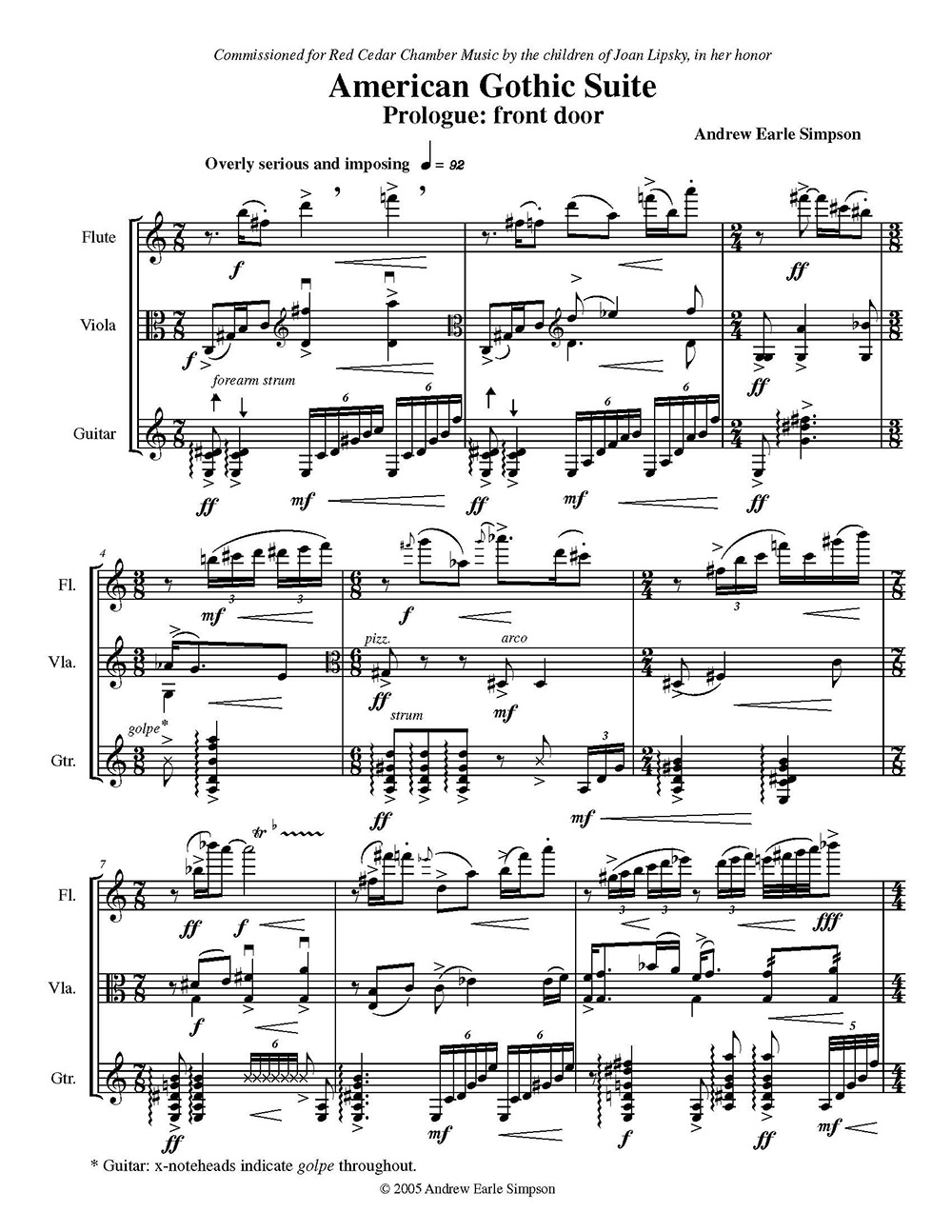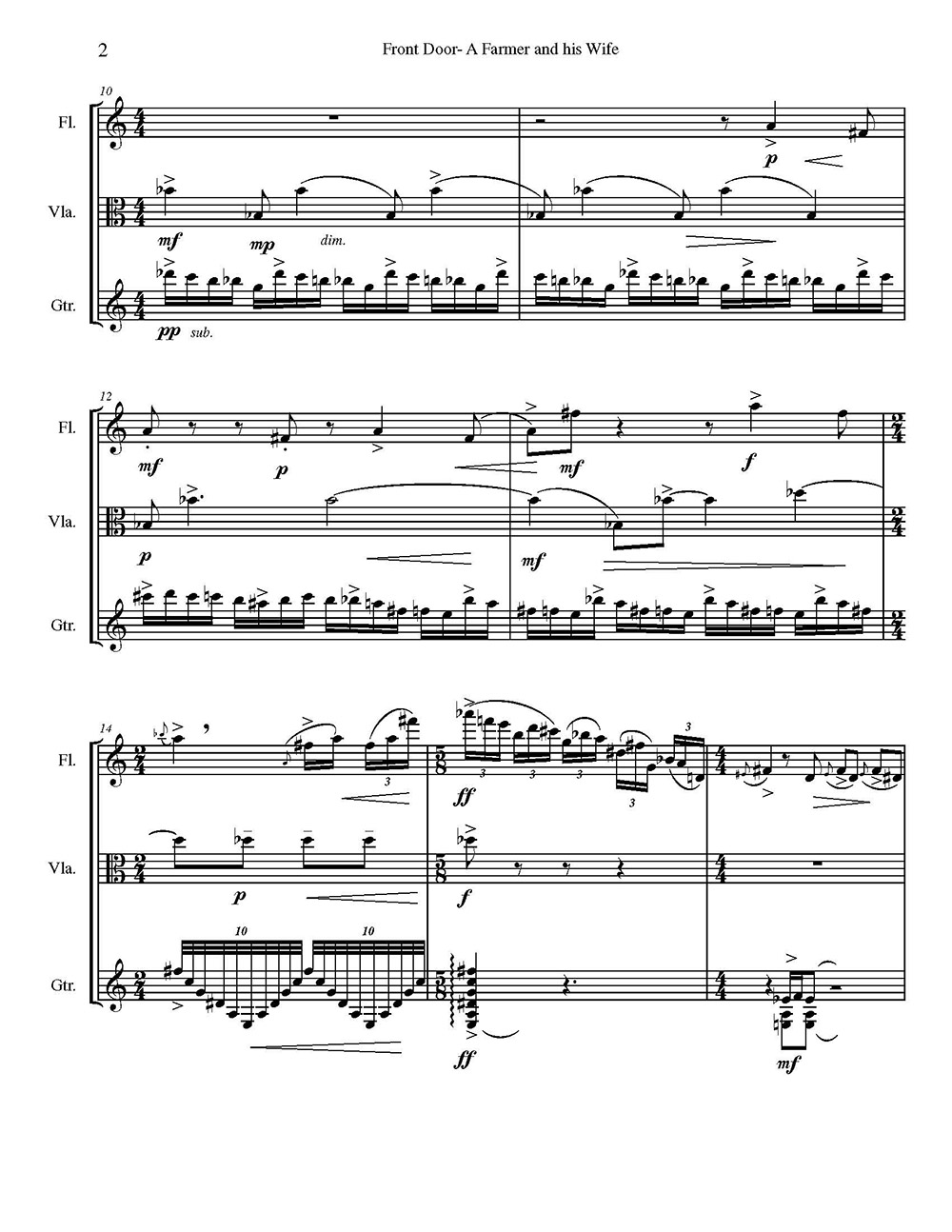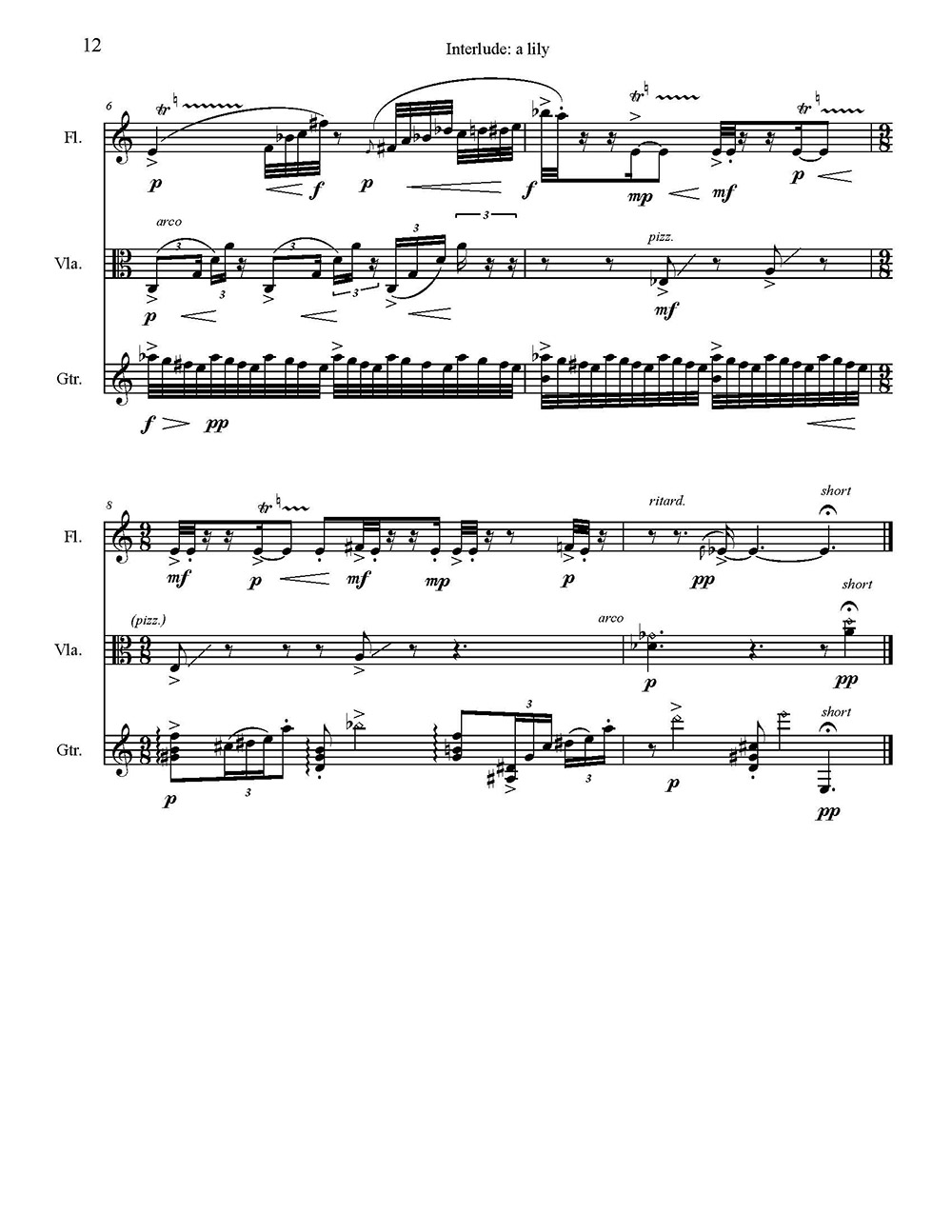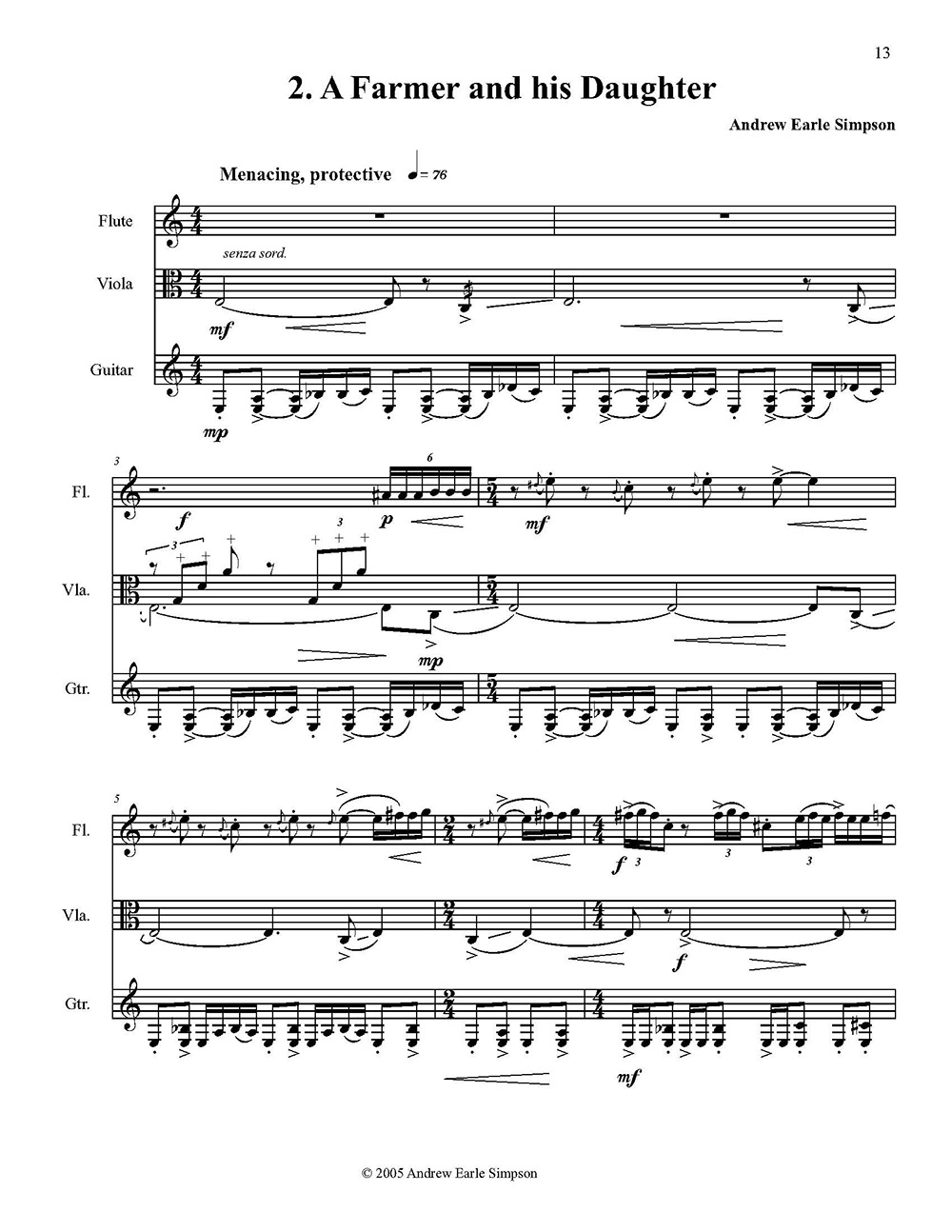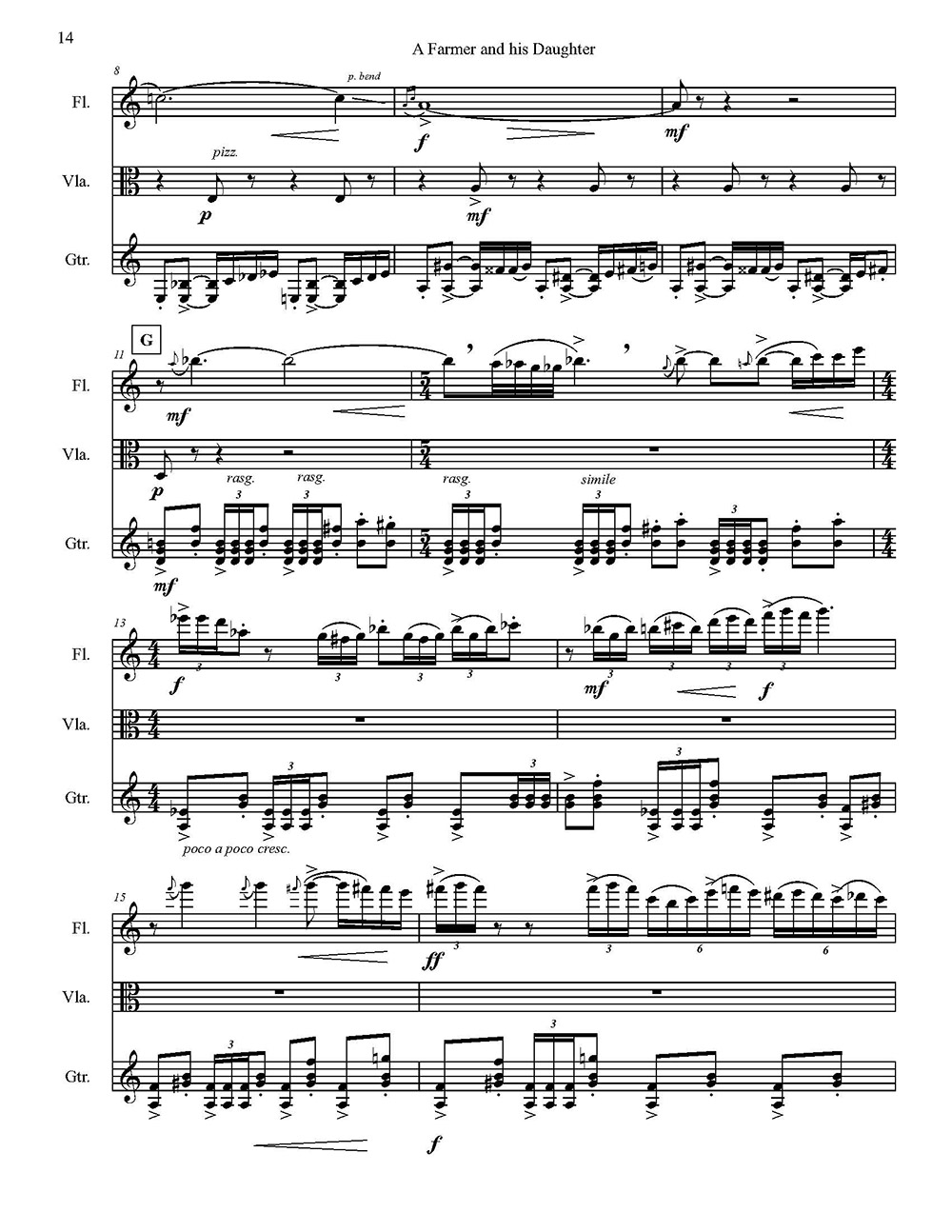"...another successful work, well composed and engaging to listen to."
— The Flutist Quarterly
Andrew Earle Simpson: American Gothic Suite: Theme and Variations on Grant Wood’s Art (2005)
for flute, viola, and guitar, 14 minutes
Instrumentation
flute, viola, guitar
Recording
Fireflies: Chamber Music by Andrew Earle Simpson/Red Cedar Trio (Fleur de Son Classics, 2009)
Premiere
Commissioned for the Red Cedar Trio and premiered in 2005 in the Iowa studio in which American Gothic was painted, the piece considers the relationship between the man and woman in Grant Wood’s most famous painting. The variations evoke different possibilities.
Listen
Farmer and his Wife (excerpt 1)
Farmer and his Wife (excerpt 2)
Farmer and his Daughter (excerpt)
interlude: another lily (excerpt)
your dentist and your sister (excerpt)
Program Notes
American Gothic Suite draws upon Grant Wood’s 1930 masterpiece for its primary point of departure, but it also involves other Wood pieces in capturing something of that artist’s quirky, dryly humorous style.
Many of my pieces have extra-musical connections, and before composing I do a great deal of research in order to learn about the topic and to create an intellectual and artistic context for the resulting work. In doing research for American Gothic Suite, I was surprised and pleased to discover that many of Wood’s seemingly placid, innocent, quasi-rustic mature artworks conceal what is in fact a quite sharp, biting humor and sophistication. Hiding complex things beneath apparently artless surfaces – “art concealing art,” in other words – has been an ideal of artists for centuries. Wood follows that tradition, and his connection with ideas and topics external to his own works finds resonance in my compositions.
The present suite is a set of theme and variations interrupted by interludes, the variations representing different ways of viewing American Gothic. The music in each variation differs according to what relationship the two figures in the painting, a man and a woman, have to each other. In researching the initial reactions to American Gothic, I learned that the nature of this relationship was – and still is – a serious debate. Personally, I had always assumed that the two figures represented a farmer and his wife, and so the Theme is based upon this view. The viola is the farmer, the flute his wife.
It then came to light that many people seeing the painting for the first time in 1930 objected to the perceived age disparity between the two figures (although this would not have been unusual in actuality); and so, to make this more palatable, the relationship of farmer and daughter was proposed. In Variation II, “A Farmer and His Daughter,” then, the instruments change roles: the daughter is not represented musically at all, but rather is guarded by her father, the viola. The flute in this variation is an imagined passionate suitor, whose advances are sternly held at bay: in fact, if you listen closely, you can even hear the three tines of the father’s pitchfork. The guitar’s insistent bolero rhythms underscore the intensity and passion of this movement.
Thus the central controversy of American Gothic: if the relationship between the figures is the first (farmer and wife), then you have a dependable and not particularly-pleased-to-see-you farm couple. If, on the other hand, you view the painting in terms of the second relationship (farmer and daughter), that is quite a different matter, and the farmer’s stern expression and pitchfork mean something else again!
Variation III represents a third way of seeing the painting, and identifies the actual models for Wood’s painting: Wood’s dentist, Dr. B. H. McKeeby, and his sister, Nan Wood Graham. (Dr. McKeeby was in fact quite reluctant to pose, and only consented after much persuasion.) Thus, “your dentist and your sister” takes the view of reality, external to the world of the painting. Each of the instruments takes a turn at role-playing: the dentist’s “drill” motif and the sister’s jumpy, jazz-like tune are continually traded among the players.
The three variations are interspersed with two very brief whimsical interludes, named “a lily” and “another lily” as homage to Wood’s “Lilies of the Alley,” flowerpots filled with found objects. “a lily” is gestural, and meant to sound improvised, thrown together, much in the spirit of Wood’s lilies.
The music of the second interlude, “another lily” is mechanistic. Following a brief guitar cadenza, the instruments employ special sound effects evoking machines and state musical ideas and which coexist rather than interact, suggestive of the random pieces of tools or machinery sticking out of one of Wood’s flowerpots.
American Gothic Suite also has a prologue and an epilogue: a Front Door and a Back Door, both employing the same material. Overly serious, deliberately pompous, these movements evoke Wood’s own highly developed sense of irony (as evidenced, for example, in his monumental and deliberately overblown painting, “Cedar Rapids”). Grant Wood worked as a designer as well as a painter, and many fine examples of metal, wood, and glasswork are in his catalogue. The image suggested for the Prologue and Epilogue of this piece was Wood’s design for the Turner Mortuary gate in Cedar Rapids (the Turner family was Wood’s great patron).
American Gothic Suite is thus a celebration of the unique artistry of Grant Wood, and pays him homage by infusing his irony, his humor, and his irreverent sense of joy into this music.
—Andrew Earle Simpson
